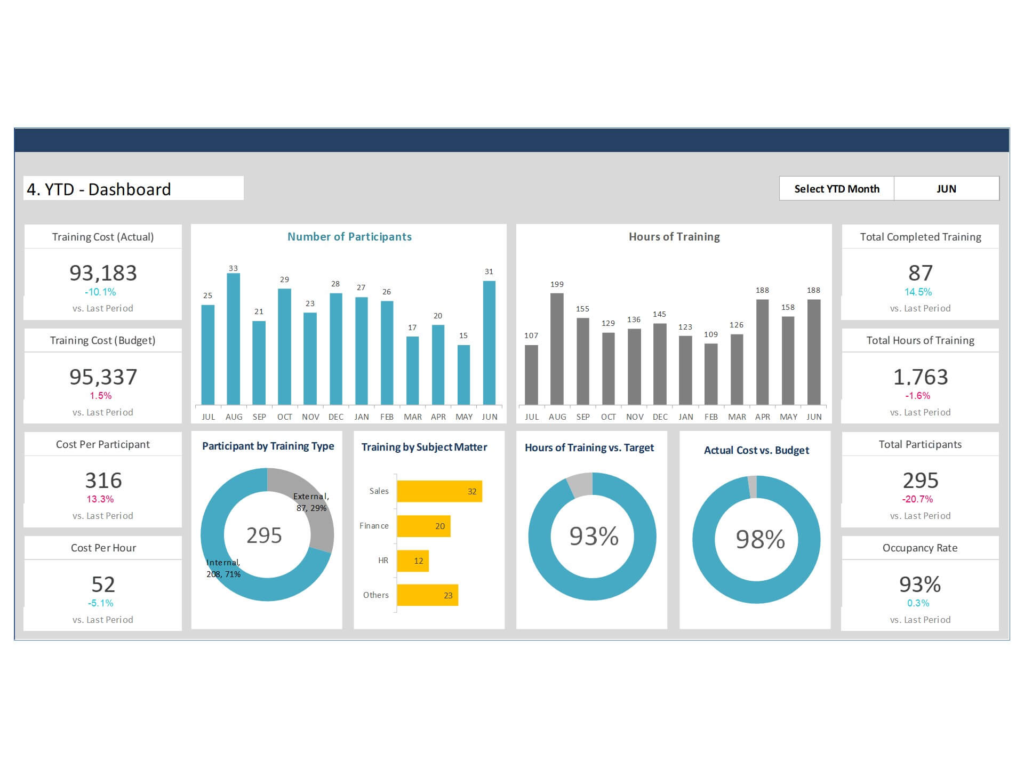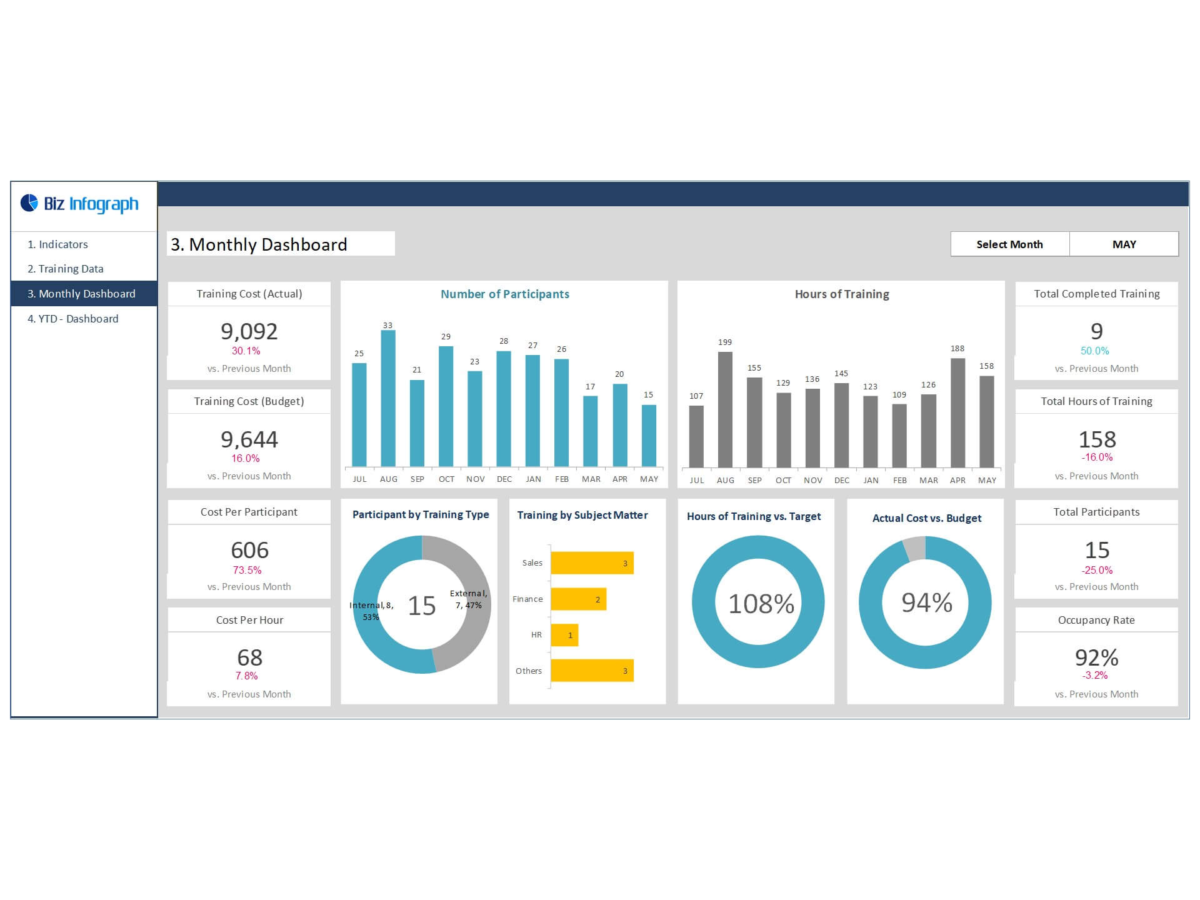If you’re an HR manager, you’re always looking for ways to improve your department’s performance. One way to do that is by tracking the right metrics and analyzing the data to see where there are opportunities for improvement.
But with so many balls to keep in the air, it can be tough to know which metrics to focus on when you’re using a professionally designed HR dashboard.
Here are a few that we think are most important:
1. Time To Hire
Time to hire is a metric that measures how long it takes to fill an open position. To calculate it, take the number of days from when the job was posted until an offer is accepted divided by the number of positions filled. A low time to hire indicates that your recruiting process is efficient and that you’re able to attract top talent quickly.
2. New Hire Attrition Rate
The new hire attrition rate measures how many employees leave your organization within their first year. To calculate it, take the number of employees who leave within their first year divided by the total number of new hires during that same period. A low attrition rate indicates that your on-boarding process is effective and that new employees acclimate well to your company culture.
3. Employee Engagement Score
Employee engagement measures how motivated and committed your workforce is to their jobs and your company’s mission. There are several ways to measure employee engagement, but one of the most popular is the Net Promoter Score (NPS). To calculate your company’s NPS, ask employees the following question on a scale of 0-10: “How likely is it that you would recommend our product/service/company to a friend or colleague?” Once you have responses from all employees, subtract the percentage of detractors (those who answered 0-6) from the percentage of promoters (those who answered 9-10). This will give you your company’s NPS score.
A high employee engagement score indicates that employees feel invested in their work and are more likely to stick around for the long haul.

4. Learning & Development Programs Completion Rate
Another important metric for HR professionals to focus on is the completion rate for learning and development programs. To calculate this metric, simply take the number of employees who complete a learning and development program divided by the total number of employees enrolled in the program.
A high completion rate indicates that employees are taking advantage of opportunities to grow their careers and develop their skills within your organization. You can also keep track of this metric with the help of an HR training dashboard.
5. Employee Retention Rate
The employee retention rate is a key metric for HR managers because it tells you how well your department is doing at retaining employees. To calculate this metric, take the number of employees who left in a given period and divide it by the total number of employees at the beginning of that period.
6. Promotions & Transfers Per Year
To calculate this, simply take the total number of promotions and transfers divided by the average number of employees during that same period. A high number of promotions and transfers indicates that employees feel they have opportunities to advance their careers within your organization.
If you’re looking for a professionally designed HR dashboard template, Biz Infograph can help you. We offer numerous dashboard templates, including HR training dashboards, sales budget templates, financial dashboards
Get in touch with us today, and we’ll help you get started.
